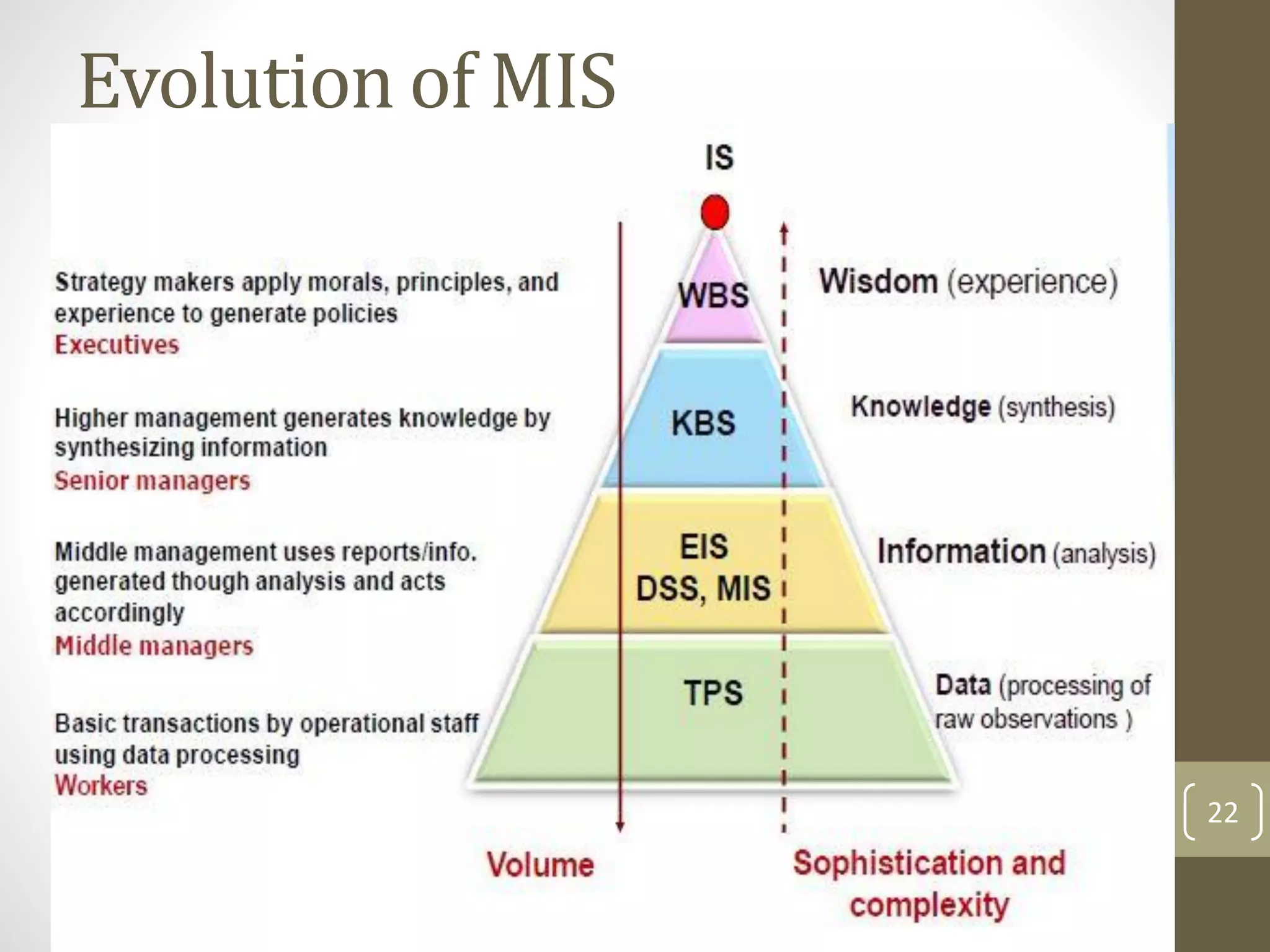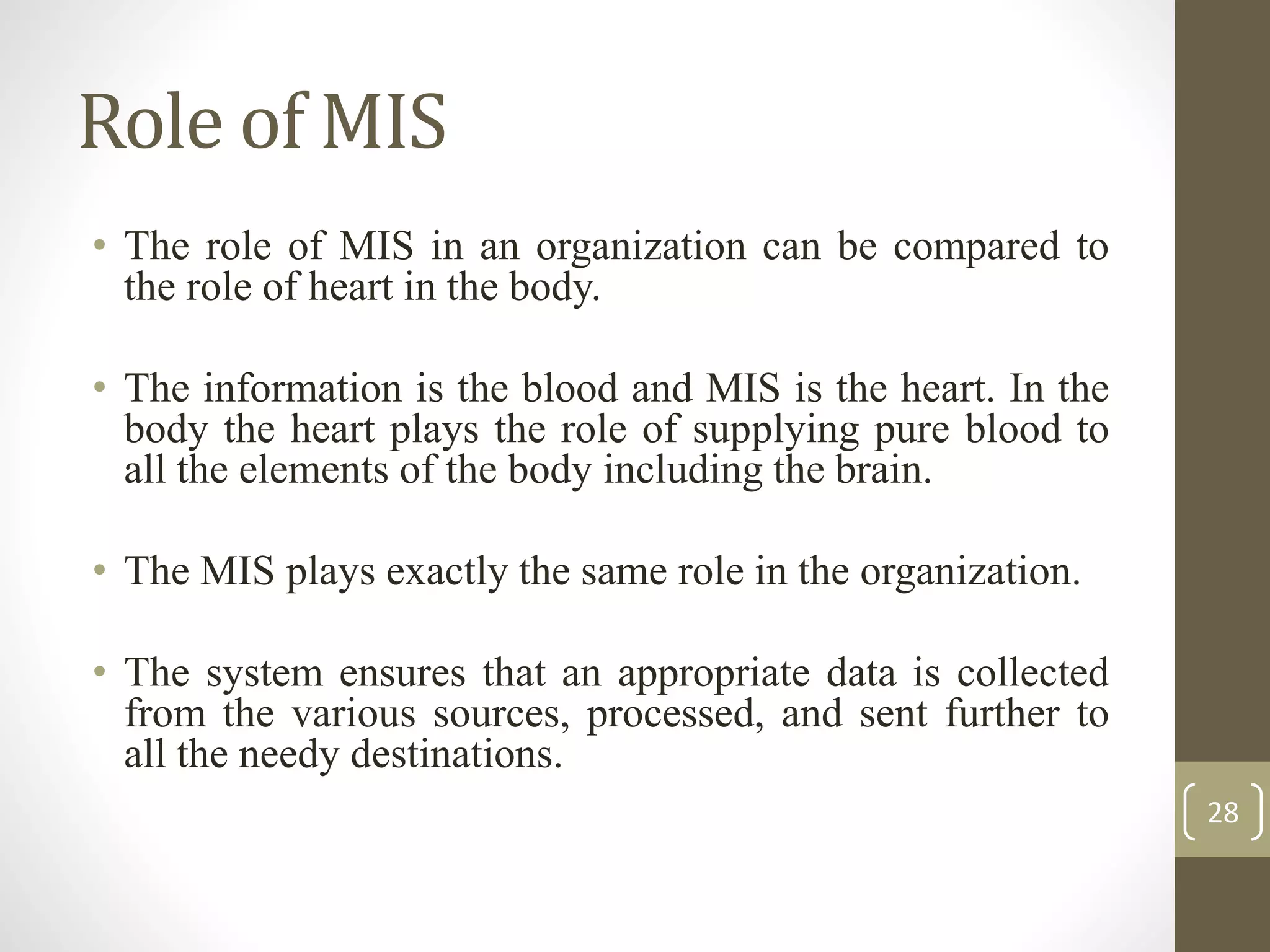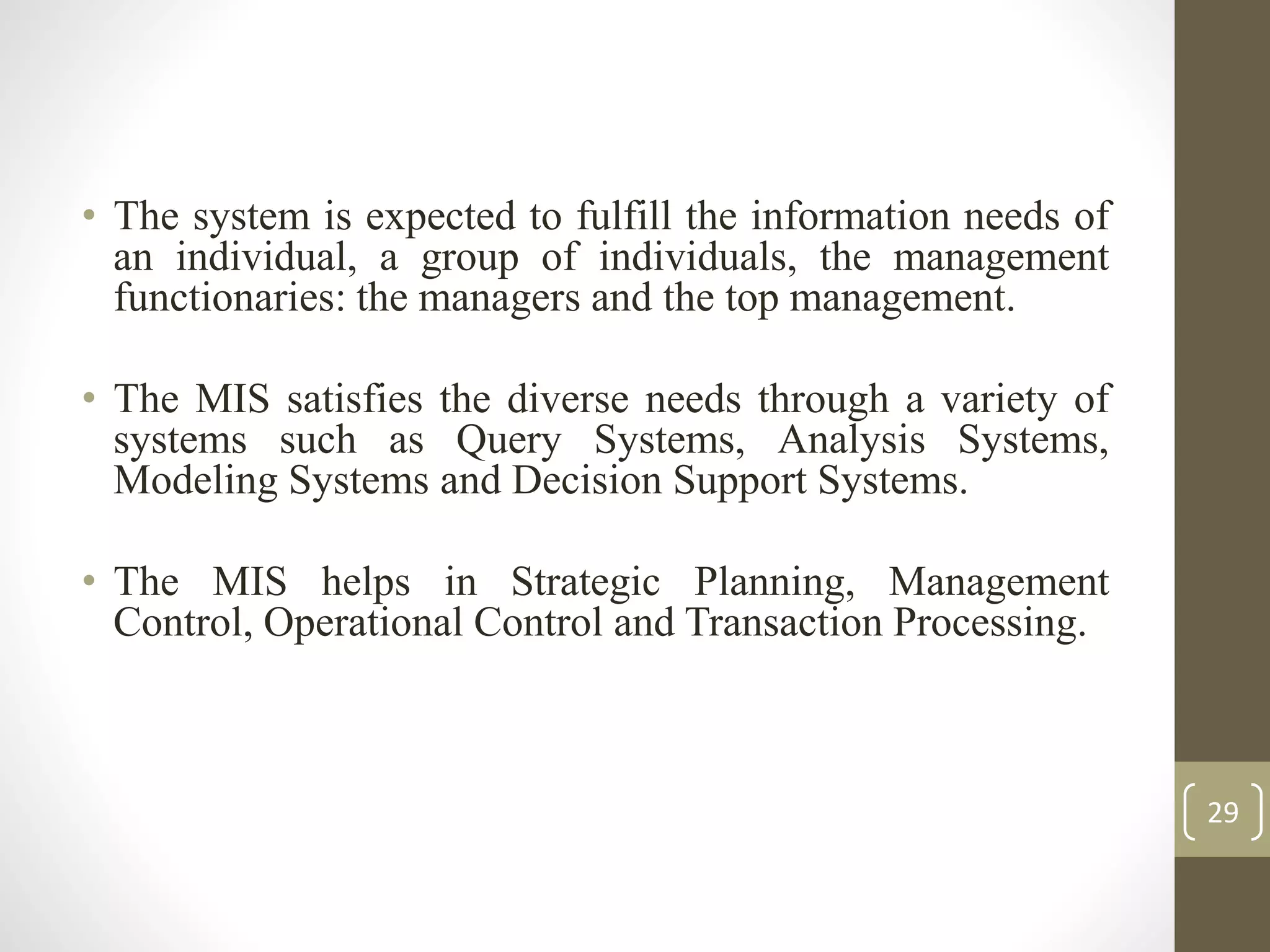The document provides a comprehensive overview of Management Information Systems (MIS), detailing its components, importance, and various types of information systems. It explains the concepts of databases, data warehouses, and data marts, and emphasizes the role of data and information in supporting effective organizational decision-making. Additionally, it discusses decision-making models, including SWOT and cost-benefit analysis, and highlights the significance of timely and relevant information for managerial tasks.














































